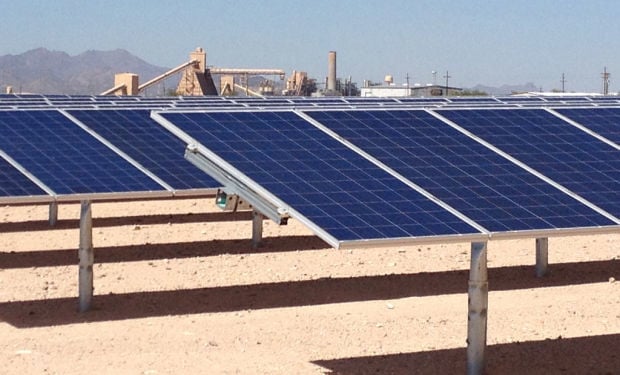Saying it needs higher rates to pay for system improvements, Tucson Electric Power Co. is seeking to increase the typical home customer’s monthly bill by about $8.
The new rates, if approved, would go into effect in May 2020, TEP said in a request filed with the Arizona Corporation Commission.
But TEP also is proposing to drop fees for customers paying with credit or debit cards, or in-person.
TEP said current rates don’t reflect about $1.2 billion the company says it’s invested since June 2015 to maintain and improve service, “while transitioning to a cleaner, more flexible and resilient energy portfolio.”
“Our proposed rates will support TEP’s continued development of a smarter, greener grid with lower emissions, a smaller carbon footprint and expanded wind and solar resources,” TEP President and CEO David Hutchens said in announcing the rate case.
TEP said its proposal, filed with the ACC on Monday, would increase the average bill of a typical residential customer by an estimated $7.61 per month compared to 2018 levels, which includes a $2 increase in the basic monthly charge.
Small-business customers would see their bills rise by an estimated $21 to $25 per month, depending on usage and pricing plan.
The utility cautioned that the actual impact of the new rates will vary with actual customer usage, and its estimate does not account for changes in surcharges or taxes before new rates take effect.
TEP, which serves about 425,000 customers, said it has been upgrading its transmission and distribution systems to serve Tucson’s expanding population and support economic growth.
Though power demand flattened following the Great Recession, TEP said peak energy demands have increased nearly 9 percent since June 2015, while the company has added about 9,000 new customers.
TEP said it also has improved its system reliability, with the average number and duration of power outages dropping over the last few years to put TEP among the most reliable electric utilities in North America.
TEP said the new rates also will support the installation of natural-gas burning reciprocating internal combustion engines to quickly provide peak power at the H. Wilson Sundt Generating Station on Tucson’s south side.
With a combined capacity of 182 megawatts, the gas engines will support the addition of new wind and solar resources, facilitate the retirement of two older, less-efficient units and reduce emissions and water use, TEP says.
TEP’s proposal also reflects the cost of its planned purchase of a second unit at the natural gas-fired Gila River Generating Station before the end of 2019 to replace capacity at the coal-fired Navajo and San Juan Generating stations, which are scheduled to retire in 2019 and 2022, respectively.
TEP said it also has improved customer service with new online options and “more responsive service.”
The utility said its plan to drop its payment-card and in-person payment fees was prompted by customer requests, noting that the fees “pose a particular burden to those with limited incomes.”
The utility’s last rate request was approved in February 2017, resulting in an average $8.50 increase in the average home customer’s bill and adding new time-of-use rate plans.
TEP says its residential electric rates have increased by about 1 percent per year, on average, over the past 20 years and, when adjusted for inflation, they have actually fallen by about 1 percent per year.





